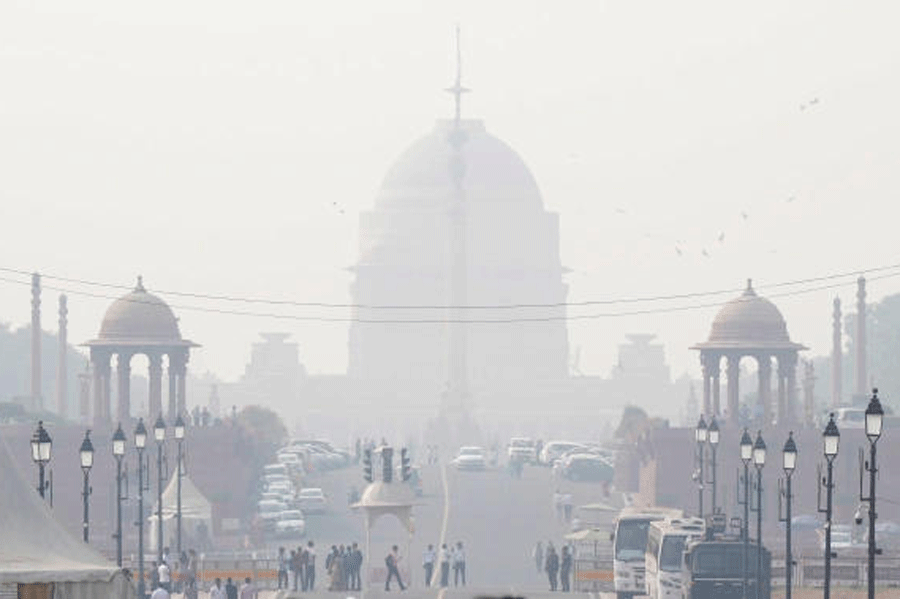A cocktail of traffic and energy emissions, crop residue fires and weather patterns typical for this time of the year has pushed peak concentrations of tiny dust and soot particles far beyond acceptable levels across the National Capital Region (NCR).
The peak concentrations of particulate matter smaller than 10 microns (or PM2.5) — small enough to penetrate deep inside human lungs — could exceed acceptable levels up to four-fold over Delhi through this week and rise even higher during Diwali, a government air quality forecast said on Monday.
The air quality early warning system run by the Indian Institute of Tropical Meteorology, Pune, has predicted that peak concentrations of PM2.5 will spike up to 250 micrograms per cubic metre every evening over the next three days, dip slightly on Friday and Saturday, and rise on November 12 and 13. The permissible limit for PM2.5 in India is 60 micrograms per cubic metre over a 24-hour period.
Environmental experts say the NCR’s air quality, deteriorating over the past week, is a fresh reminder of inadequate air pollution control measures.
Central and state authorities over the years have taken several measures to clean up fuels and technology across the transport and industry sectors, control dust sources and discourage crop residue fires. But more action is needed to meet clean air targets, said Anumita Roychowdhury, executive director for research and advocacy at the Centre for Science and Environment (CSE), a non-government entity in New Delhi.
“Only this (more action) can prevent the buildup of such smog episodes that endanger public health,” she said.
Amnesty International also issued a statement on Monday calling for immediate action to address India’s “prolonged air emergency levels”.
“The annual air emergency in Delhi is neither a new problem nor one that comes without warning,” Ann Harrison, Amnesty International’s climate adviser said in a statement. “The government’s repeated failure(s) to protect people from exposure to hazardous air in Delhi and surrounding areas risk violating their human rights to life and health,” she said.
The CSE said the most notable trend this year has been the sudden and rapid buildup of smog in the early phase of winter. On November 2, PM2.5 levels over Delhi exceeded 300 microgram per cubic metre, rising 68 per cent within 24 hours and reaching the “severe” level for the first time in the season.
Weather scientists tracking air quality said wind direction and strength play a critical role in the air quality over the NCR. “The crop stubble fires only add to large baseline levels of other sources of pollution. But the wind direction typically moves the soot like a river towards NCR,” said a scientist who asked not to be named.
The Centre has said it has released over Rs 3,300 crore under a crop residue management scheme to discourage paddy straw burning. The Union environment ministry said last month that the counts of paddy straw fires across northern India from mid-September to end-October had dropped from more than 13,600 fires in 2022 to 6,300 in the same period this year.

